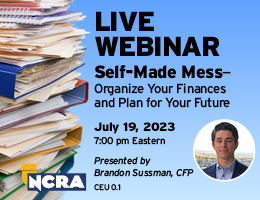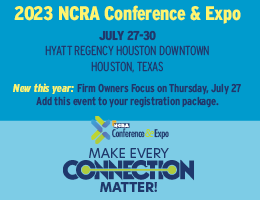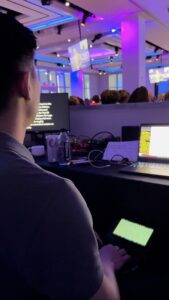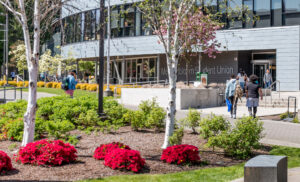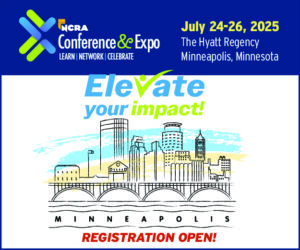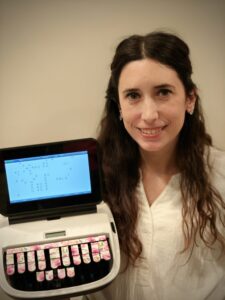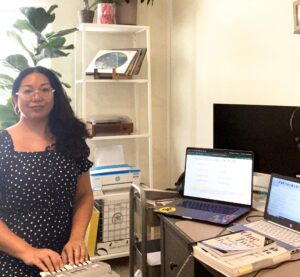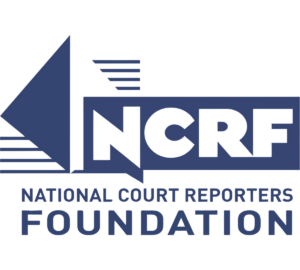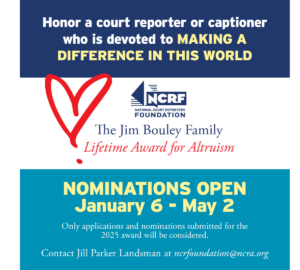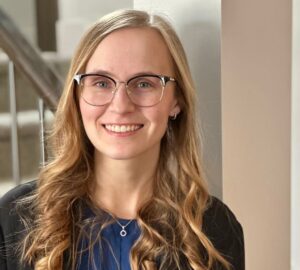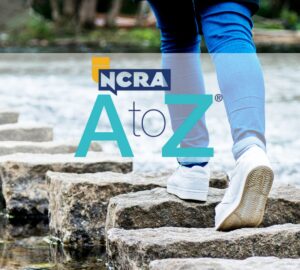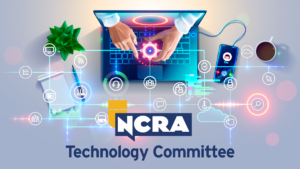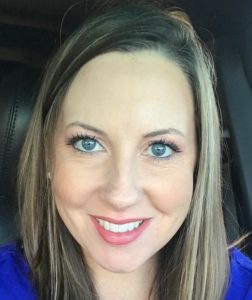Attendees at the 2017 NCRA Convention & Expo had the opportunity to attend an array of sessions and educational workshops designed to help them increase their professional experience and hone their skills. The summaries below highlight a few of these sessions.
Fast, faster, fastest
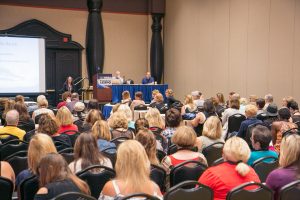
One of the first sessions to kick off the 2017 NCRA Convention & Expo, “Fast, faster, fastest” with Kelly Shainline, RPR, CRR; Jason Meadors, FAPR, RPR, CRR, CRC; and Keith Lemons, FAPR, RPR, CRR, was packed with standing room only. The nuts-and-bolts realtime session went through step by step how to set up for good realtime. “My first page, I just consider it a sacrificial goat,” Meadors said to laughter, but the presenters emphasized the importance of good preparation as the key to strong realtime. For example, for legal work, the presenters said to get the appearance page ahead of time and use that to do some research. “Let’s say there’s a doctor,” said Lemons. “Look up online what kind of medicine they do — such as obstetrics and gynecology — and use that to build specific words in a dictionary.”
“I won’t be mean,” Meadors said, “but I will be firm to get what I need,” especially for CART or captioning work.
The presenters all said that they do prep the night before — although the length of time varied a bit based on how important the trial was, how many people would be seeing the realtime, and if there would be a rough draft, for example – but also emphasized the importance of arriving early to the job. Shainline said that while she often prepares brief forms the night before, after she sets up at the job, she does some practice with those briefs to help get them into muscle memory.
Gadgets and gizmos
Merilee Johnson, RDR, CRR, CRC, and Micheal Johnson, RDR, CRR, lead a session filled with dozens of specific gadgets, gizmos, and app recommendations to make life easier both on and off the job. For example, for the office, Merilee and Micheal shared:
- a few types of charging stations, including the Satechi USB Charging Station, which charges up to six devices at a time, and the EZO power desktop, which Merilee says she’s brought on jobs as a value add to help attorneys plug in their devices;
- second monitors, including the Duet Display app, which turns an iPad into a second screen (currently only for Apple products), and the Mimo, which is a small second monitor – both Micheal and Merilee said they’ve found it helpful to use a small second monitor to free up real estate on their laptop and move over, for example, BriefIt on a second screen; and
- cable management gadgets, including the Baltic Sleeve, which is a Velcro sleeve that wraps around a bunch of cables, and the Safcord, which is also a Velcro solution that performs the same function as gaffer’s tape, except it’s reusable.
How to compete with some of the best
In a session that was part of the Student Learning Zone at the 2017 NCRA Convention & Expo, Chase Frazier, RMR, CRR, CRC; Tami Frazier, RMR, CRR; and Ron Cook, FAPR, RDR, CRR, CRC, gave concrete tips to students on improving their writing while getting through school. The three presenters came from a variety of perspectives: a captioner, an official, and a freelancer.
Chase had strong realtime skills coming out of school, but he didn’t have his state CSR. Because of this, he went into captioning. Tami started as an official out of school because a job opened up at the right time. She said that while court work can be a little faster than depo work — and trials are more controlled — new professionals shouldn’t avoid going right into court after school. And Ron cited the freedom and money potential as perks to freelancing, but he admitted that one downside is the lack of benefits. (He is also a partner in a firm.)
Tami taught both of her sons (Chase and brother Clay Frazier) to write steno, and she did so paperless. She also emphasized perfection. When Chase was at 200 wpm, she saw that while he had the speed, he was writing sloppy and with no punctuation. She had him go back to 160 and work back up while also working on writing perfectly. Chase attributed this experience to his strength in realtime.

“A lot of people don’t emphasize the mental part of practicing,” said Ron. “If you don’t think you’re going to get it, you won’t get it.” He provided a couple metaphors for practicing, including “slow things down” — meaning to slow things down mentally, stay relaxed, and go with the flow.
Tami recommended practicing about 10 percent faster than her goal speed (which was a technique that she used to get through school). “You always want to be pushing yourself,” she said. Pick tough dictation, she suggested — “and I’m a real believer in lit — it makes you write; there’s nothing easy about lit,” she said. She also suggested practicing a five-minute take at least ten or fifteen words per minute faster than the goal speed. But since she also emphasized aiming for perfection, repeating a take until writing it perfectly will clean up a reporter’s writing and also gives the reporter an opportunity to work in briefs and phrases. “The better writer you are, the easier the job,” she said.
Business of being a court reporter
Charisse Kitt, RMR, CRI; Jessica Waack, RDR, CRR; Mike Hensley, RPR; and Katherine Schilling, RPR, presented a mock deposition as part of the Student Learning Zone at the 2017 NCRA Convention & Expo. With Schilling playing the part of newbie reporter, the mock deposition went through a variety of typical situations that a new reporter may not have encountered before or covered in school. At each “freeze frame,” the panelists discussed how they would handle each situation. A few of the situations were:
Introducing yourself at the beginning of the deposition: Kitt said she makes a point of greeting all of the lawyers in the room with a firm handshake. Waack expanded on this by saying that she makes sure her ears are over her shoulders over her hips, so she’s standing with confidence and not hunched over.
Swearing in the witness: Waack suggested having a physical piece of paper with the oath to refer to. She also said to make sure to include “swear or affirm” in the wording, since some witnesses don’t want to swear, and to avoid the phrase “so help you God.” Hensley pointed out that reporters should always check with their state association or firm first to see if there’s a preset oath that the reporter should be using.
Using briefs for names, words, and phrases: For briefs, Hensley pointed out that they don’t have to make sense on paper as long as they make sense to you to write. Kitt said she likes to get to a job at least 30 minutes early so she can use the time to jot down some briefs. And Waack suggested using LinkedIn to find the proper spellings of witnesses, etc., although she added that this will likely lead to some odd friend requests. She also said that after she’s developed a brief for an acronym, if the speaker suddenly uses the full term, she simply writes the brief twice.
The witness is talking too fast: Kitt said, “Don’t ever depend on your audio,” stressing that it’s the reporter’s responsibility as the record-keeper to keep in control and stop any fast talkers to tell them to slow down. Waack says she likes to reset the speaker to the point where she lost the record by saying, “You were talking about [subject].” And Hensley favors using a visual hand signal – physically lifting his hands up off the machine to show the room that something is up with the reporter.
Hensley also emphasized throughout the session the importance of knowing your software.
Beyond English
Stanley Sakai, CRC, led a session that focused on captioning in other languages, especially Spanish. The discussion was guided partially by Sakai’s prepared presentation and partly by the audience’s questions.
Sakai has a working knowledge of eight different languages with varying levels of fluency, including Dutch, German, Japanese, Korean, and Spanish. Prompted by a question from the audience, he explained that one of the methods he uses to keep up with such a wide variety of languages is to have different devices set to different languages (for example, his tablet set in one language and his mobile phone in another). He also takes the opportunity to look up words he encounters on the fly and to read articles, etc., in a language other than English so he learns content and vocabulary at the same time.
The session description specifically highlighted Spanish, and the growing need for Spanish captioning came up in the discussion, both domestically and abroad. Sakai talked a little bit about the differences between baseline speeds in English and Spanish and how Spanish is at a slightly slower speed. He also discussed his methods for doing CART work in German and how steno systems work in Korean and in Japanese. Sakai had to adjust his steno theory in order to provide CART, which was for a German language class, and he even had to be prepared to jump between German and English. Similarly, in the discussion, he pointed out that the Korean and Japanese languages toggle between different writing systems based on the specific words, and reporters and captioners in those countries need to have keyboards that are set up to quickly switch between the writing systems at the speed of spoken language.
Read all the news from the 2017 NCRA Convention & Expo.


